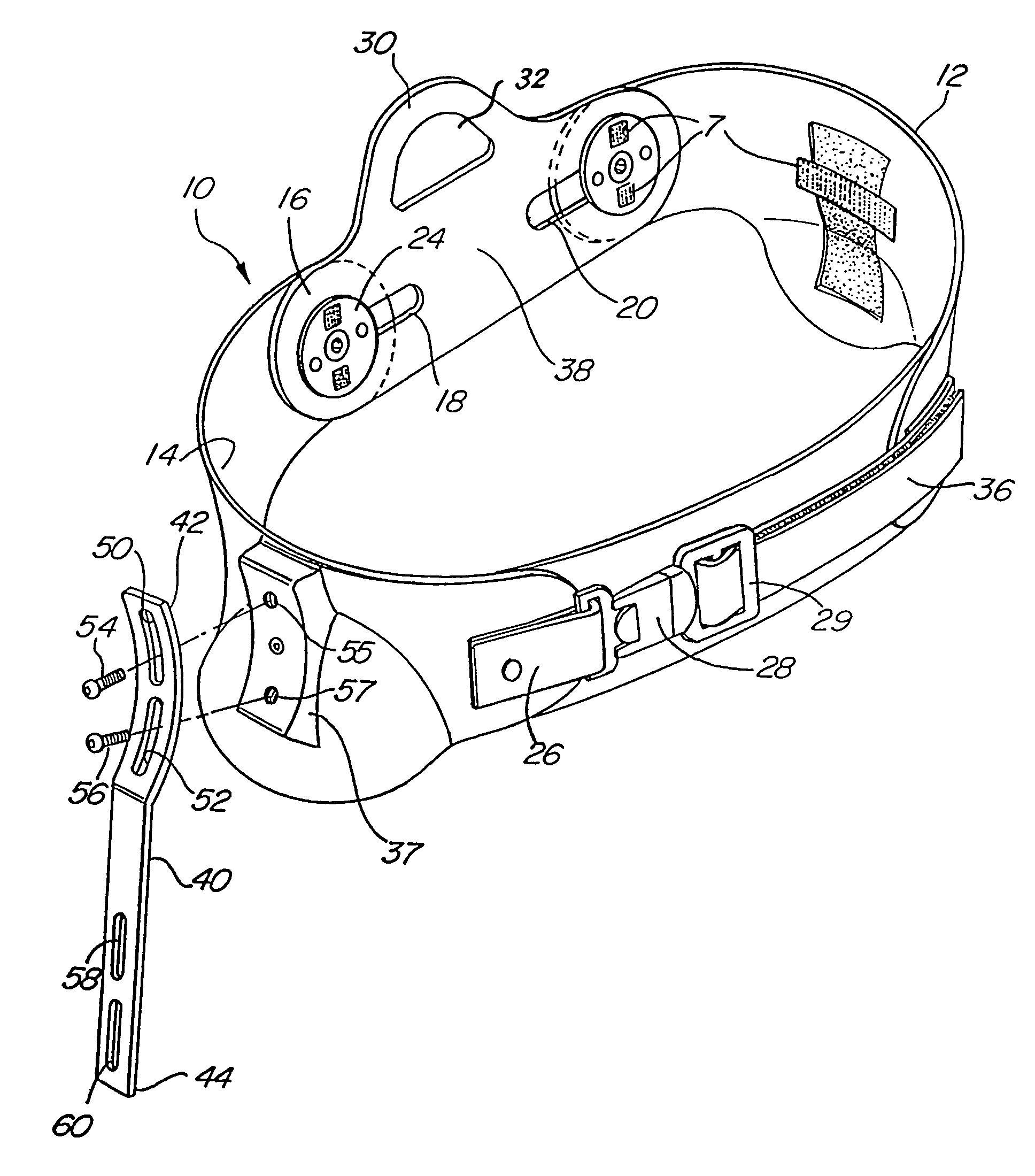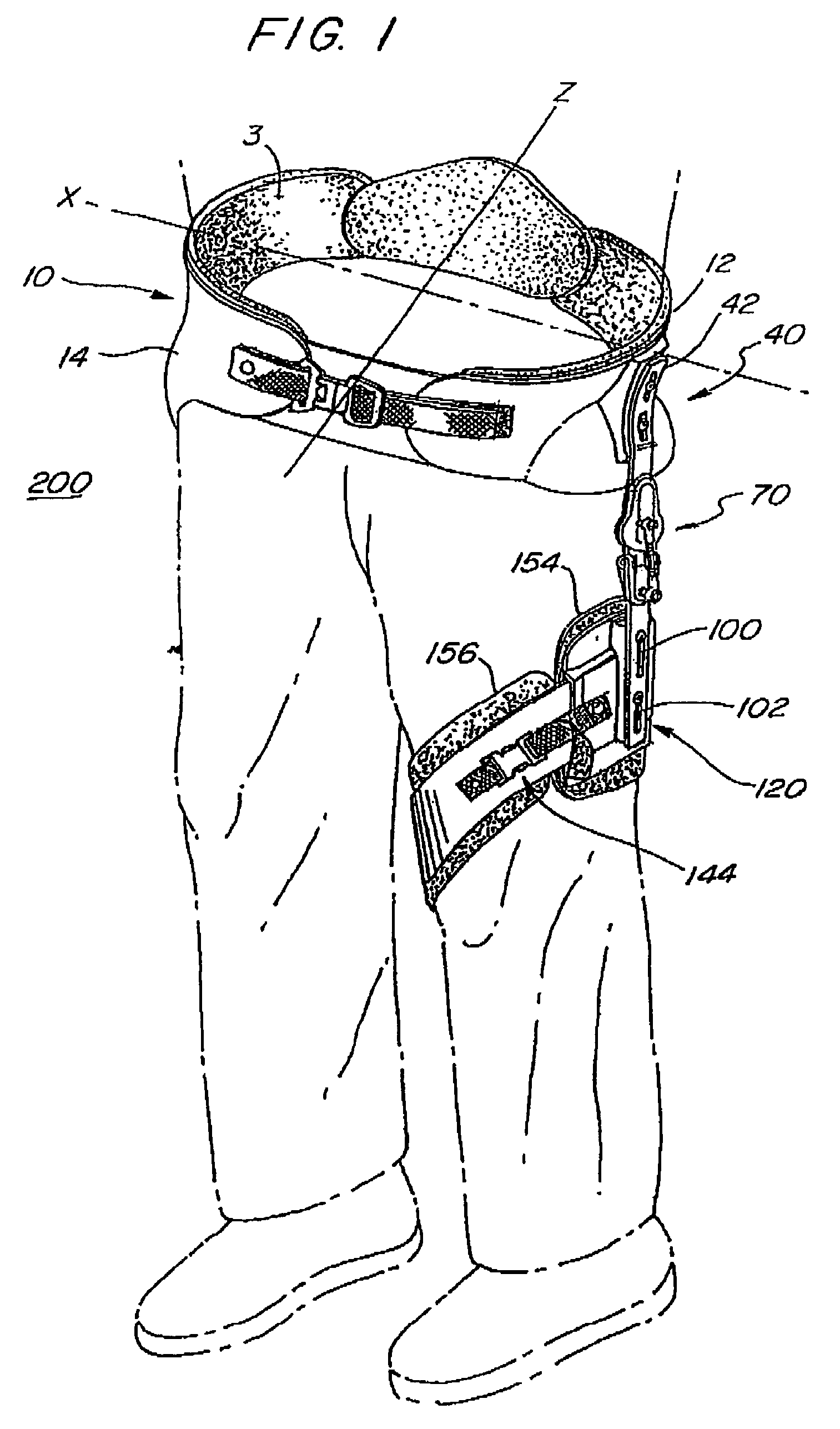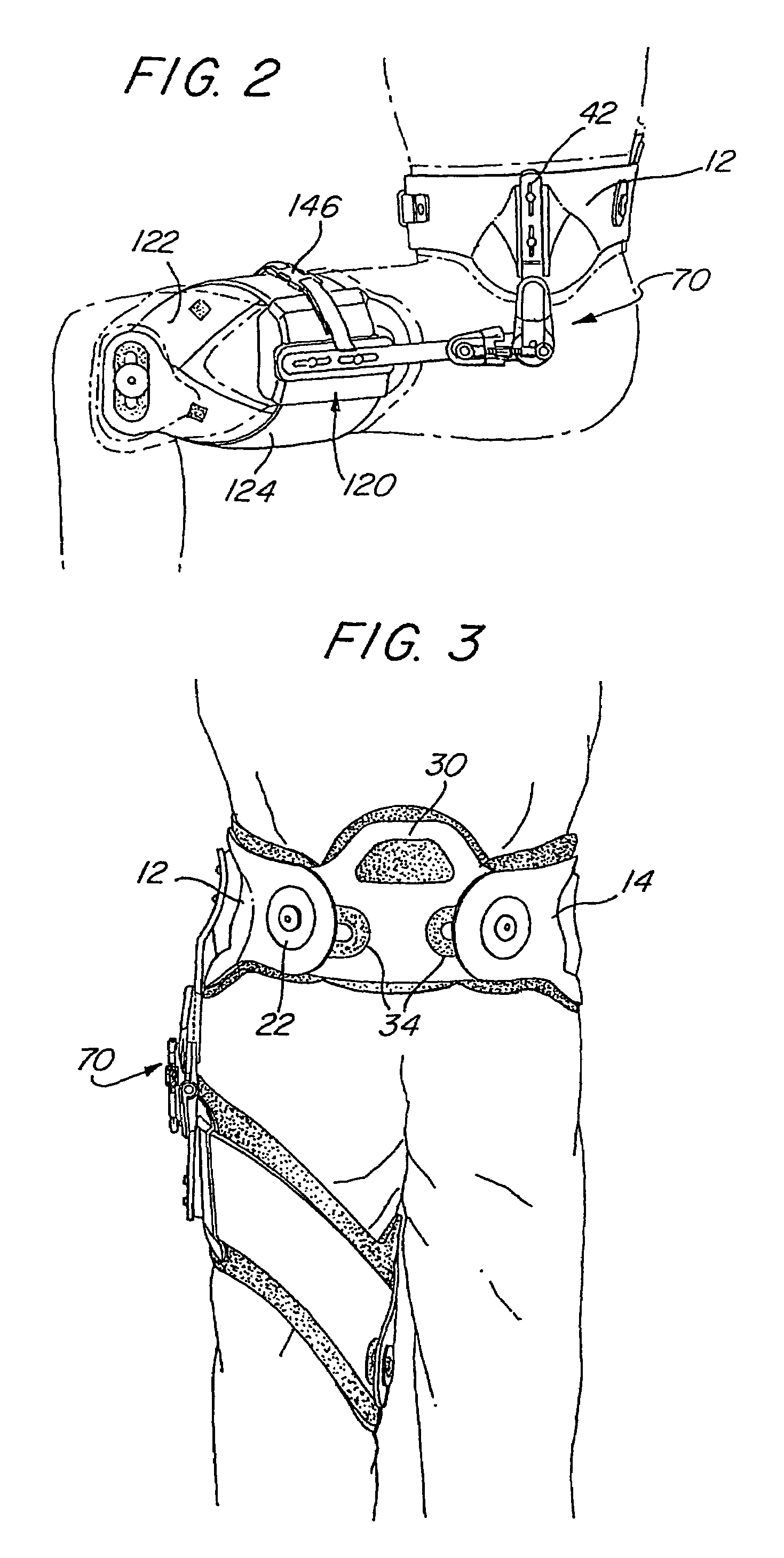Modular adjustable prophylactic hip orthosis and adduction/abduction joint
a hip joint and modular technology, applied in the field of orthosis, can solve the problems of most susceptible to posterior dislocation, hip dislocation, and compromised muscle groups, and achieve the effect of preventing rotational displacement of the sleeve member
- Summary
- Abstract
- Description
- Claims
- Application Information
AI Technical Summary
Benefits of technology
Problems solved by technology
Method used
Image
Examples
Embodiment Construction
[0030]The following description is provided to enable any person skilled in the orthotic art to make and use the invention and sets forth the best modes contemplated by the inventors of carrying out their invention. Various modifications, however, will remain readily apparent to those skilled in the art, since the general principles of the present invention have been defined herein specifically to provide an improved modular component orthosis which can be combined together to form an adjustable prophylactic hip orthosis and adduction / abduction joint.
[0031]The modular components of the present invention can be combined together to provide an orthosis that can be pre-fabricated and subsequently adjusted to meet the specific needs and sizes of various patients. Thus, the cost of customized orthoses can be avoided while retaining the advantages of a customized fitting to meet the specific needs of the patient. The utilization of the various modular components can be advantageously inco...
PUM
 Login to View More
Login to View More Abstract
Description
Claims
Application Information
 Login to View More
Login to View More - R&D
- Intellectual Property
- Life Sciences
- Materials
- Tech Scout
- Unparalleled Data Quality
- Higher Quality Content
- 60% Fewer Hallucinations
Browse by: Latest US Patents, China's latest patents, Technical Efficacy Thesaurus, Application Domain, Technology Topic, Popular Technical Reports.
© 2025 PatSnap. All rights reserved.Legal|Privacy policy|Modern Slavery Act Transparency Statement|Sitemap|About US| Contact US: help@patsnap.com



